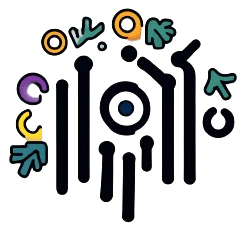| Definition | The process of creating lifelike representations of architectural designs, often using advanced 3D modeling software. | The art of creating small-scale, detailed illustrations, often for artistic or storytelling purposes, using traditional or digital media. |
| Purpose | Primarily used for presenting architectural projects to clients, stakeholders, and for marketing purposes. | Used for creative expression, storytelling, or to create whimsical, detailed scenes that may or may not be based on real-life structures. |
| Target Audience | Architects, real estate developers, clients, investors, and construction professionals. | Art collectors, hobbyists, museums, and audiences interested in visual storytelling or dioramas. |
| Scale | Typically at a large scale, often depicting buildings, interiors, or urban environments at a realistic size. | Typically at a small or miniature scale, focusing on intricate details and often exaggerated or stylized elements. |
| Tools & Techniques | Utilizes advanced CAD software, 3D rendering programs like AutoCAD, Revit, 3ds Max, and Blender, along with photorealistic rendering engines such as V-Ray or Lumion. | Can involve traditional art tools like paints, brushes, and pencils, or digital illustration tools like Adobe Illustrator, Photoshop, and sometimes even 3D sculpting software for creating digital miniatures. |
| Accuracy & Detail | Requires high accuracy in depicting measurements, materials, lighting, and spatial relationships to ensure the design can be realized as intended. | Focuses more on artistic detail and creativity, with less emphasis on real-world accuracy. The aim is to evoke emotion or tell a story rather than to create a buildable design. |
| Materials Represented | Includes realistic materials like concrete, glass, wood, metal, and vegetation, accurately modeled to reflect their real-world counterparts. | Materials are often creatively interpreted; for example, a tree might be represented with exaggerated colors or textures to fit the narrative or artistic style. |
| Timeframe & Workflow | Often follows a structured workflow with strict deadlines, starting from concept development, through design iterations, to final rendering and client approval. | More flexible, allowing for iterative experimentation and creativity. Deadlines are less rigid, and the process can be more exploratory. |
| End Product | Highly polished, photorealistic images or animations used in presentations, marketing materials, or client approvals. | Finished illustrations or dioramas that can be displayed in galleries, publications, or as part of a broader artistic project. |
| Realism vs. Stylization | Emphasizes realism to ensure that the visualizations can be closely replicated in the physical world. | Emphasizes stylization, often bending or breaking the rules of realism to achieve a desired artistic effect. |
| Technological Integration | Often integrates with Building Information Modeling (BIM) systems and may include data layers for environmental analysis, material usage, and cost estimation. | Primarily focused on the artistic aspect, with technology used to enhance visual storytelling rather than integrating functional data. |
| Sustainability Considerations | Increasingly integrates sustainable design principles, including energy efficiency, material sustainability, and environmental impact analysis. | Rarely concerned with sustainability in a practical sense, but may explore themes of sustainability creatively within the artwork. |
| Career Pathways | Leads to careers in architectural firms, real estate development, construction, urban planning, and interior design. | Can lead to careers in art, illustration, museum exhibit design, film set design, and other creative industries. |
| Educational Requirements | Often requires a degree in Architecture, Civil Engineering, or a related field, with additional training in 3D modeling and rendering. | May require a background in Fine Arts, Illustration, or Design, with an emphasis on creative and conceptual thinking. |
| Market Demand | High demand in real estate and construction industries, particularly in urban areas with ongoing development projects. | Niche demand in art markets, museums, and specialized industries such as film and animation. |
| Cost of Production | Can be costly due to the need for advanced software, powerful hardware, and professional expertise. | Typically lower cost, though high-quality materials and time-intensive processes can increase expenses in detailed projects. |
| Examples of Application | Used in real estate marketing, urban planning proposals, and design competitions. | Used in art exhibitions, children’s book illustrations, and film production design for miniature sets. |
| Ethical Considerations | Must consider the ethical implications of how space is represented, particularly in terms of accessibility, environmental impact, and cultural sensitivity. | Ethical considerations are more focused on the messaging and themes presented in the artwork, ensuring respectful representation of subjects. |
